The LG G5 is a television that not only continues but also expands on what we loved about previous models in the G series. Instead of taking the beaten path, LG opted for a new Tandem OLED panel – and it was a stroke of genius. Picture brightness? Simply, F E N O M E N A L. HDR effect? Close to reference. Colors after calibration? Nearly perfect. Motion smoothness, low latency, and gaming features? At an absolutely top level. The G5 performs well in movies and games, day and night, whether with a decoder, console, PC, or just the remote. Of course – this is not a product without flaws. It's a pity that DTS support is lacking, the viewing angles have worsened compared to its predecessor, and the remote may vary depending on the version. But when we look at the overall picture, it's hard not to feel that this is one of the best OLED televisions available on the market, and perhaps even the best. Definitely, when it comes to its versatility and picture quality without having to reach for extremely expensive models from competitors. If you're looking for a television for everything – for cinema, gaming, a bright living room, streaming content, or connecting a computer – the LG G5 is a device that simply delivers on every front without compromise.
- Matching (Score)
- Our verdict
- TV appearance
- Where to buy
- Contrast and black detail
- HDR effect quality
- Factory color reproduction
- Color reproduction after calibration
- Smoothness of tonal transitions
- Image scaling and smoothness of tonal transitions
- Blur and motion smoothness
- Console compatibility and gaming features
- Input lag
- Compatibility with PC
- Viewing angles
- TV efficiency during daytime
- Details about the matrix
- TV features
- Apps
- Playing files from USB
- Sound
LG OLED G5 vs SAMSUNG OLED S90F (WOLED)
Direct compare
Check the best price offer:
LG OLED G5Check the best price offer:
SAMSUNG OLED S90F (WOLED)G54 / G51 / G55 / LW / LS
S90F / FAE / FAT
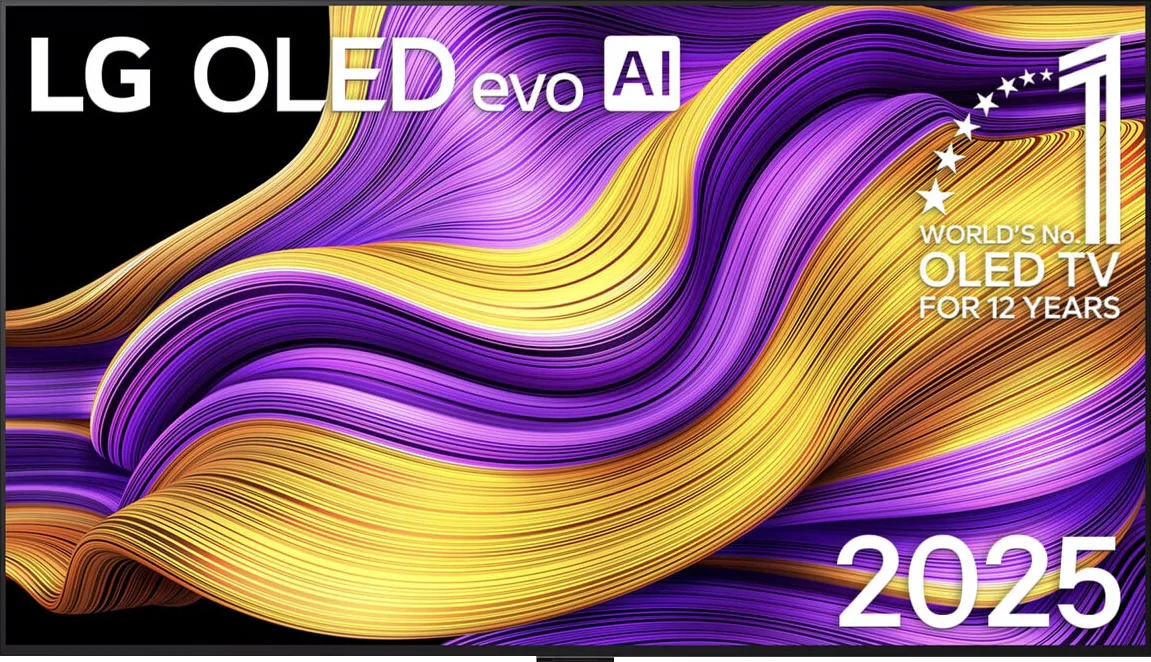

Panel type: WRGB OLED
Resolution: 3840x2160
System: WebOS
Model year: 2025
Complete the survey to find out the result

Panel type: WRGB OLED
Resolution: 3840x2160
System: Tizen
Model year: 2025
Complete the survey to find out the result

Overall rating
8.9
8.1
Movies and series in UHD quality
9.2
8.3
Classic TV, YouTube
9.2
8.7
Sports broadcasts (TV and apps)
9.0
8.5
Gaming on console
9.6
9.6
TV as a computer monitor
8.8
8.6
Watching in bright light
8.0
6.1
Utility functions
8.5
7.2
Apps
9.1
8.7
Sound quality
8.7
7.4
Complete the survey to find out what fits your preferences
Advantages
Amazing black and contrast
Reference color reproduction after calibration
Very high brightness in HDR content
Outstanding cooperation with consoles and computers
Great motion fluidity - OLED panel 165Hz
Many features for gamers: VRR, ALLM, HGIG, low input lag
Excellent WebOS operating system with many applications
Superb handling thanks to the Magic remote with "cursor" function
Exceptional black and contrast
High brightness for an OLED TV - 1200 nits peak brightness
Very good motion fluidity - OLED panel 144Hz
Low latency - input lag 5ms
Gaming features: 4x HDMI 2.1, VRR, ALLM, Game Motion Plus, etc.
PiP function and excellent support for external devices with a solar remote
Advanced operating system: Tizen
Pleasant sound with a slightly noticeable bass
Disadvantages
No support for DTS audio format
Worse (though still good) viewing angles than the predecessor G4
Different versions of the remote in derivative models – hard to predict which version we will get
Playback issues with some formats from USB.
Subtle degradation of tonal transitions (worse than the previous S90D)
No support for DTS:X – an external amplifier is required for full support of this format
Our verdict
The Samsung S90F is an excellent representative of the premium mid-range in the world of OLED televisions. Here we have an organic matrix that guarantees perfect contrast – and no matter how hard LCD manufacturers try with local dimming in Mini LEDs, this black simply cannot be replicated. The S90F displays its class here without any compromises. Compared to last year's model, we get a slightly brighter WOLED panel that can achieve up to 1200 nits in favorable conditions. This is a result sufficient for comfortable viewing of HDR content in most scenes at reference quality – especially on streaming platforms like Netflix. The picture quality is at a very high level, regardless of whether we are watching a movie, playing on a console, or streaming a sports event. In fact – versatility is one of the greatest advantages of this model. With a 144 Hz refresh rate, very low input lag, and a full set of gaming features (including functioning HGiG and the unique Game Motion Plus motion smoother), it's hard to find anything to complain about. The Tizen system worked really well on the S90F. It has its limitations – primarily a closed ecosystem and fewer app options than Google TV – but if you mainly use the most popular services, this shouldn't be a problem. A big plus is also the remote control, which can operate most connected devices – even without a numeric keypad. There are also downsides. The built-in media player has issues with some formats, and the anti-reflective coating typical for WOLEDs doesn't cope very well with strong light – reflections can be noticeable. We also don't have support for DTS and Dolby Vision, but that's a standard at Samsung that has been to be expected for years. So is the S90F with a WOLED panel the perfect television? No – but it really is just a few things short. It's one of the most refined and complete OLEDs in this price range, capable of handling any content, from a series on Netflix to gaming on a console, to a Sunday match.
TV appearance
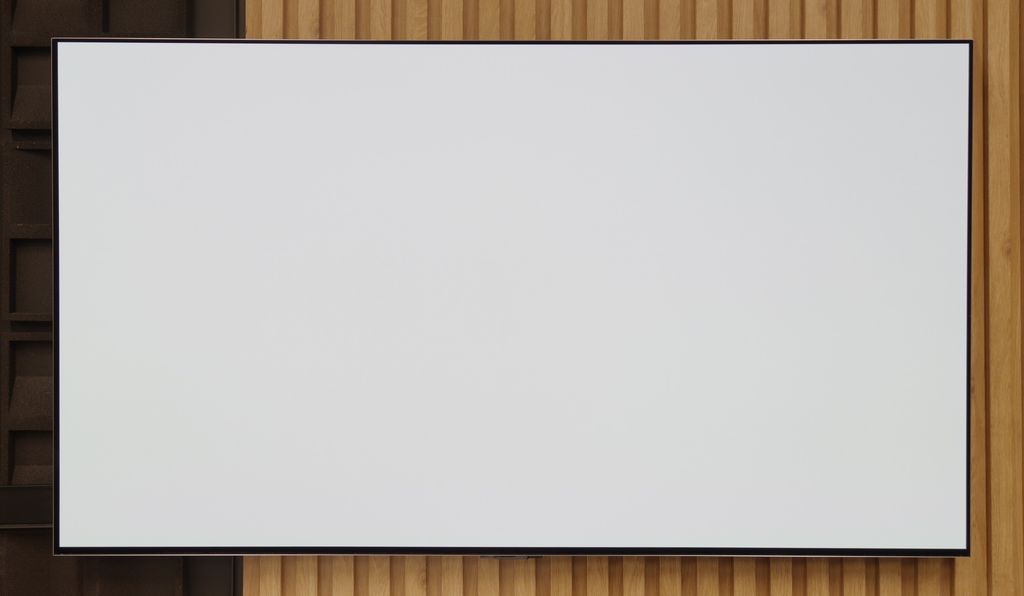
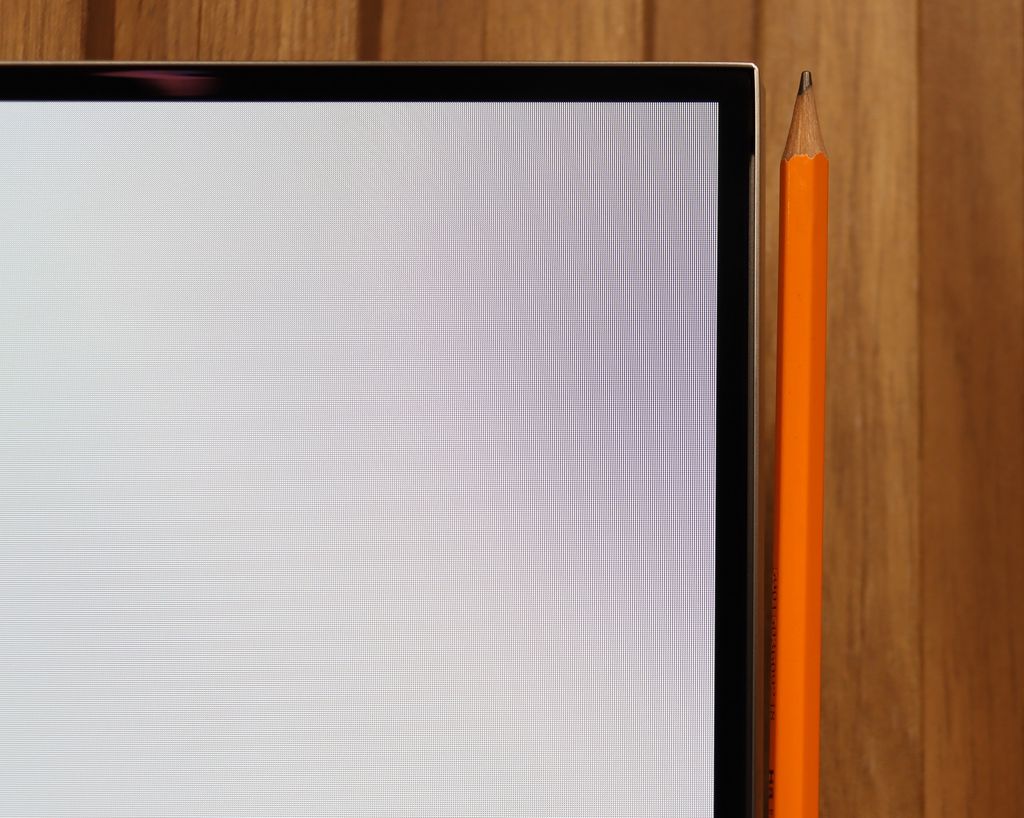
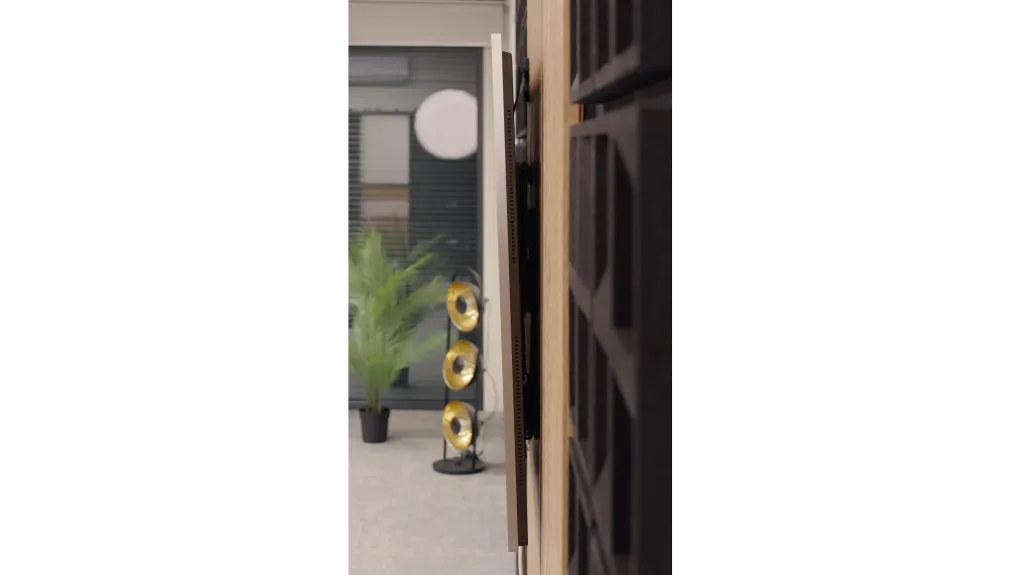




Where to buy
Contrast and black detail
10/10
10/10
Contrast:

Result
∞:1

Result
∞:1

Result
∞:1

Result
∞:1

Result
∞:1

Result
∞:1

Result
∞:1

Result
∞:1

Result
∞:1

Result
∞:1
Halo effect and black detail visibility:
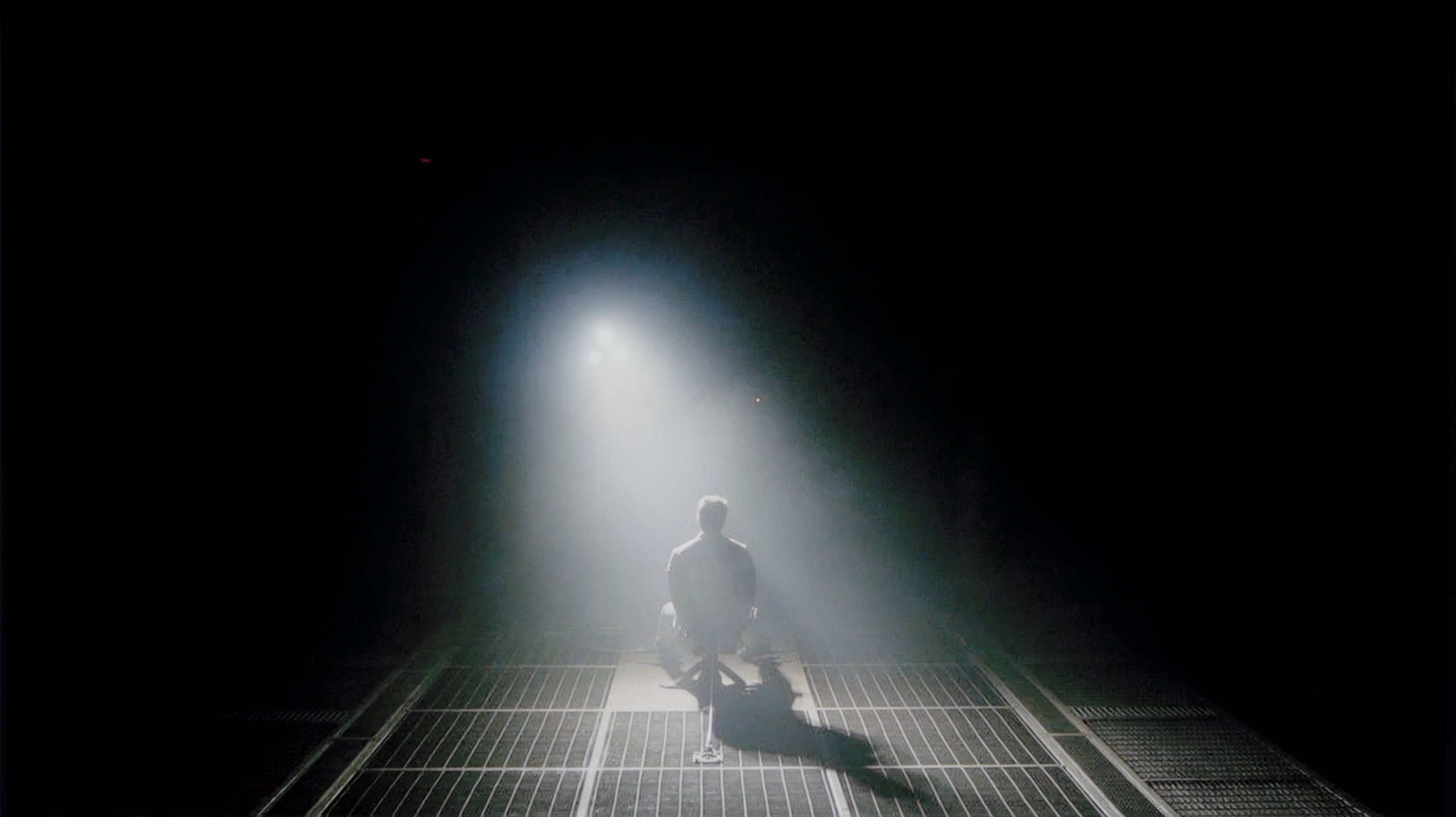

LG G5, as befitting an OLED television, impresses with its contrast and black quality. In scenes with a lot of dark areas, the screen looks almost perfect, offering deep, absolute black and infinite contrast – an effect that still cannot be achieved on any LCD television. The new Tandem OLED panel does not introduce any negative changes compared to previous generations – blacks are perfect regardless of the content. Watching scenes from movies like The Revenant or Oblivion, you can clearly see the excellent separation of lights, without any blooming effect or brightening of dark parts. In this category, the LG G5 deserves the highest rating.
In the case of the Samsung S90F, we have an interesting situation: almost all size variants are equipped with WOLED panels, except for the 65-inch version, which received a QD-OLED panel. In this test, we analyze the version with the WOLED panel produced by LG Display, but the question is: does this affect the quality of black and contrast in this part of the test? In practice – it does not. Regardless of the technology used, both panels can generate perfect black and infinite contrast. This is exactly what we expect from any high-end television. Watching a series in the evening, in a completely dark room, is pure pleasure. The TV easily separates bright elements – like reflections or background lights – from deep, dark parts of the image, creating no halos or brightening, which still plague the highest-class LCD televisions. This is where OLED technology shows its strength – and the S90F is no exception. In terms of black and contrast, we can find absolutely nothing to criticize.
HDR effect quality
9.1/10
7.2/10
Luminance measurements in HDR:

Result
2346 nit

Result
2353 nit

Result
2399 nit

Result
2353 nit

Result
2012 nit

Result
1099 nit

Result
1177 nit

Result
1252 nit

Result
1183 nit

Result
577 nit
Scene from the movie “Pan” (about 2800 nits)


Scene from the movie “Billy Lynn” (about 1100 nits)


Static HDR10


Dynamic: Dolby Vision
Dynamic: HDR10+


HDR luminance chart:
SAMSUNG OLED S90F (WOLED)
Luminancja HDR
Luminance of RGB colors
LG OLED G5
Luminancja HDR
Luminance of RGB colors
LG G5 with the new Tandem OLED panel brings the biggest change specifically in terms of the brightness of the television. And it’s quite impressive. This is truly an astronomically bright OLED. In every tested scene – whether it’s point lights or full-screen whites from the movie The Meg – the brightness on the G5 exceeded 2000 nits. Just a year ago, such values on an OLED were simply unimaginable. And here we are – the G5 comes close, and at times even surpasses the best Mini-LEDs on the market. A new feature of the Tandem OLED panel is the expanded color gamut coverage – and here the LG G5 performs almost perfectly. DCI-P3 achieves a full 100%, while BT.2020 maintains around 83%. These are some of the highest values currently available on the market – it’s hard to find any other television that comes close to such results, unless we are talking about the best displays with QD-OLED panels. The G5 has nearly reference-quality HDR – both in terms of brightness and color saturation. This is an OLED that can truly shine – and not just figuratively.
Does the S90F handle not only dark scenes but also bright parts of the image? Definitely yes. Stories about OLEDs as "dark screens" can slowly be regarded as a myth. The Samsung S90F, similar to the LG C5 based on a very similar panel, achieves brightness exceeding 1000 nits. This is a value entirely sufficient to enjoy impressive and dynamic HDR images – both in movies and series. Most of the scenes we tested look stunning, with well-defined lights and high contrast. Of course, OLED technology still has its limitations – with very bright, full-screen sequences, such as the test card from the movie The Meg (5th image), the TV can noticeably dim the image. However, it's worth noting that such scenes are quite rare. One can say that the HDR effect is good enough that even mid-range OLED models, like the S90F, can provide a cinematic experience in the home living room.
Factory color reproduction
7.8/10
7/10


Factory Mode
After calibration


Factory Mode
After calibration
Our test unit LG G5 struggled with some issues in the factory Filmmaker mode. And while the image might have seemed fine to most people, we knew that this TV was capable of much more. This mode had a clear excess blue tint in the white balance, resulting in a strong cooling of the image – particularly in HDR modes, where there was also a lack of red. The picture seemed cold, and its sharpness was artificially boosted and unnatural. Another significant issue was the brightness characteristic. In SDR content, the situation wasn't the worst, aside from a slight dimming of the entire image. However, it performed much worse in HDR materials – due to improper brightness management, the smallest details could completely disappear from the image, and larger, bright elements appeared overexposed and lacking gradation. Luckily, the G5 supports calibration using 3D LUT (a tool for professionals to calibrate colors), so we decided to take advantage of its professional background and see what it was really capable of. Because while it wasn't terrible even before calibration, the potential of this TV definitely deserved more.
Samsung S90F, like most modern TVs, offers many picture modes, but – in line with our testing tradition – we checked it in its best one, which is the Filmmaker mode. As a result, the image looks much more natural than in the default, often oversaturated settings. It was neither overly saturated nor artificially subdued – just closer to what you should see. Of course, "more correct" doesn’t mean "perfect." Our S90F sample unfortunately had significant issues with white balance, particularly in the blue color range, resulting in a slightly yellowish filter applied to most scenes. Someone might say that it looks more "cinematic" – because it's warmer – but let's be honest, George Lucas didn't film Star Wars in sepia 😉 (you'll find the comparison with the scene as always below).
Additionally, in HDR materials, there was a noticeable issue with brightness management. The EOTF curve showed a distinct "spike" in brightness – the TV brightened the image more than it should have, making some effects look too intense and diverging from the reference. Thankfully, some of these issues can be eliminated with professional calibration – you can read about its effects later in the review.
Color reproduction after calibration
9.8/10
9.2/10




After completing the calibration process using professional tools, we can confidently state that the LG G5 offers nearly reference-quality image. Most of the errors related to white balance and the ColorChecker test are below the value of 2, which is a phenomenal result, practically imperceptible to the human eye. And while one could still criticize that in HDR films the television tends to slightly dim the smallest elements of the image, in practice, this does not negatively affect the overall impression. Hats off to LG, because once again they provide the user with enormous possibilities for adjusting their display – and this, combined with very good parameters of the panel itself, results in an image that is truly hard to surpass.
After calibration, we managed to eliminate almost all the aforementioned errors. Older movies in SDR quality finally look as they should – without the sepia effect or artificial aging of the image. The atmosphere of the classics is returning to its rightful place (you're welcome, Star Wars fans), and the colors no longer resemble an Instagram filter.
One of the key changes was also the improvement of brightness characteristics in HDR content. We managed to control the EOTF curve in an almost reference way. Yes, the most demanding users may notice minimal deviations in brightness, but to be honest – most viewers won't even notice that. And it’s no wonder, because the vast majority of errors are below the ΔE 3 threshold, which is below the visibility threshold. After calibration, the S90F (WOLED) becomes a truly excellent display – one that you can enjoy nearly perfect image quality on.
Smoothness of tonal transitions
8.5/10
7.3/10












The smoothness of tonal transitions in the LG G5 is a clear step forward compared to last year's model. Not only has the brightness improved, but also the way colors blend, which the G4 sometimes struggled with. In the vast majority of scenes, the G5 has no issues with tonal transitions – there is no typical banding associated with WOLED technology, nor ugly breaks between colors. Of course, in very dark areas of the image and with shades of gray, minor imperfections can still be noticed, but these are things that the average viewer wouldn't even register. In short – it's really good.
Well, here we have to honestly admit – the S90F has let us down a bit. Compared to last year's S90D model with a WOLED panel (very similar to the one used this year), this year's Samsung has performed worse. And not only in comparison to its main competitor, the LG C5, but even when set against its older brother. The biggest problems arise in dark scenes, where difficulties in smoothly blending colors are visible – the screen slightly struggles with tonal transitions, causing some parts to lose their naturalness. We don't know exactly what went wrong – maybe it's a matter of software or a different processing algorithm. It's a shame because we were hoping that last year's level would be at least maintained. Unfortunately, it’s a step back.
Image scaling and smoothness of tonal transitions
8.7/10
7.5/10
Smooth transition function
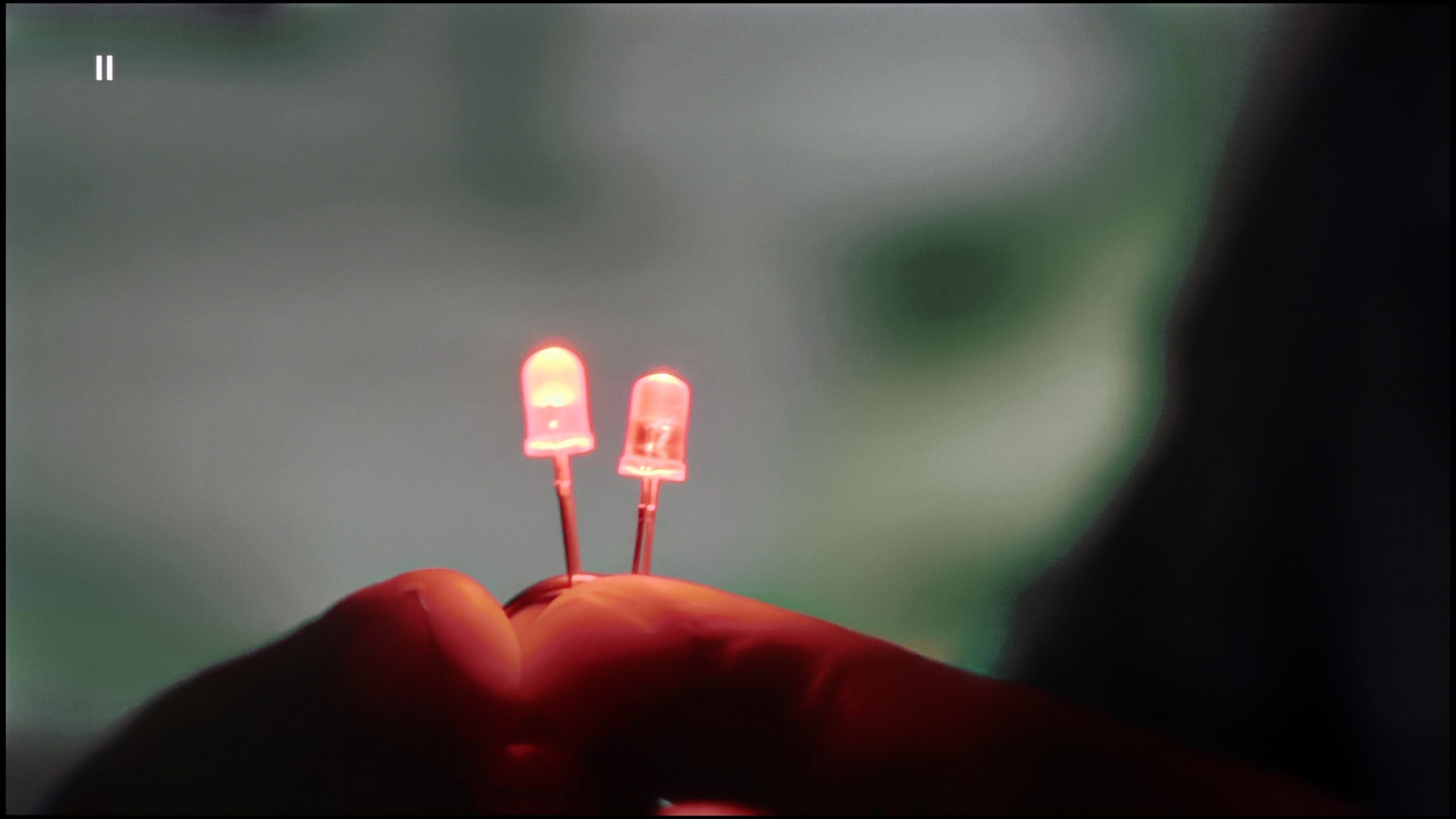

Image without overscan on the SD signal


Upscaling and digital image processing in the LG G5 perform very well. The television handles lower quality content exceptionally, especially when the "Smooth Gradation" feature is set to a low level. In this mode, it effectively removes unwanted artifacts and issues with visible tonal transitions. It may also slightly smooth out some desired details, such as the subtle texture of clothing or skin, but importantly – it does not remove film grain, so it’s hard to say there’s a serious compromise here. It’s one of those options that’s definitely worth enabling.
The G5 also does well with upscaling, which is improving the quality of older materials. The test image with the model looked really solid – slight edging was visible, but that’s an effect that can’t be completely avoided. Additionally, there were no issues with overscan, which – contrary to appearances – is not obvious, even in 2025.
Digital image processing in the S90F:
Fortunately, Samsung, as in most of its models, can effectively deal with the unwanted posterization effect in the S90F. The function responsible for this element is noise reduction, which quite nicely smooths out tonal transitions and eliminates unnatural color joins – of course, within its capabilities. Unfortunately, it works quite aggressively, so using it comes with compromises. In addition to improving gradation, it may also remove film grain or gently soften facial features. In this case, the choice is yours – do you prefer a more "clean" image, or do you care about preserving the original texture of the material.
Image scaling in the S90F:
In this year's model, Samsung has implemented its own AI processor – NQ4 Gen3, which really manages quite well with upscaling. In our test scenes, the television effectively "pulled up" lower-quality content towards artificial 4K – the image was more pleasant to view, and the differences in sharpness between native and scaled content were minimal. Unfortunately, behind this entire AI marketing façade lies a certain shortcoming. The S90F does not handle overscan well. If you reach for truly archival materials – like a VHS tape of your parents' wedding – you must reckon with the fact that the lower part of the image may be cut off. The image adaptation function to the resolution simply does not work here as it should.
Blur and motion smoothness
9/10
8.5/10
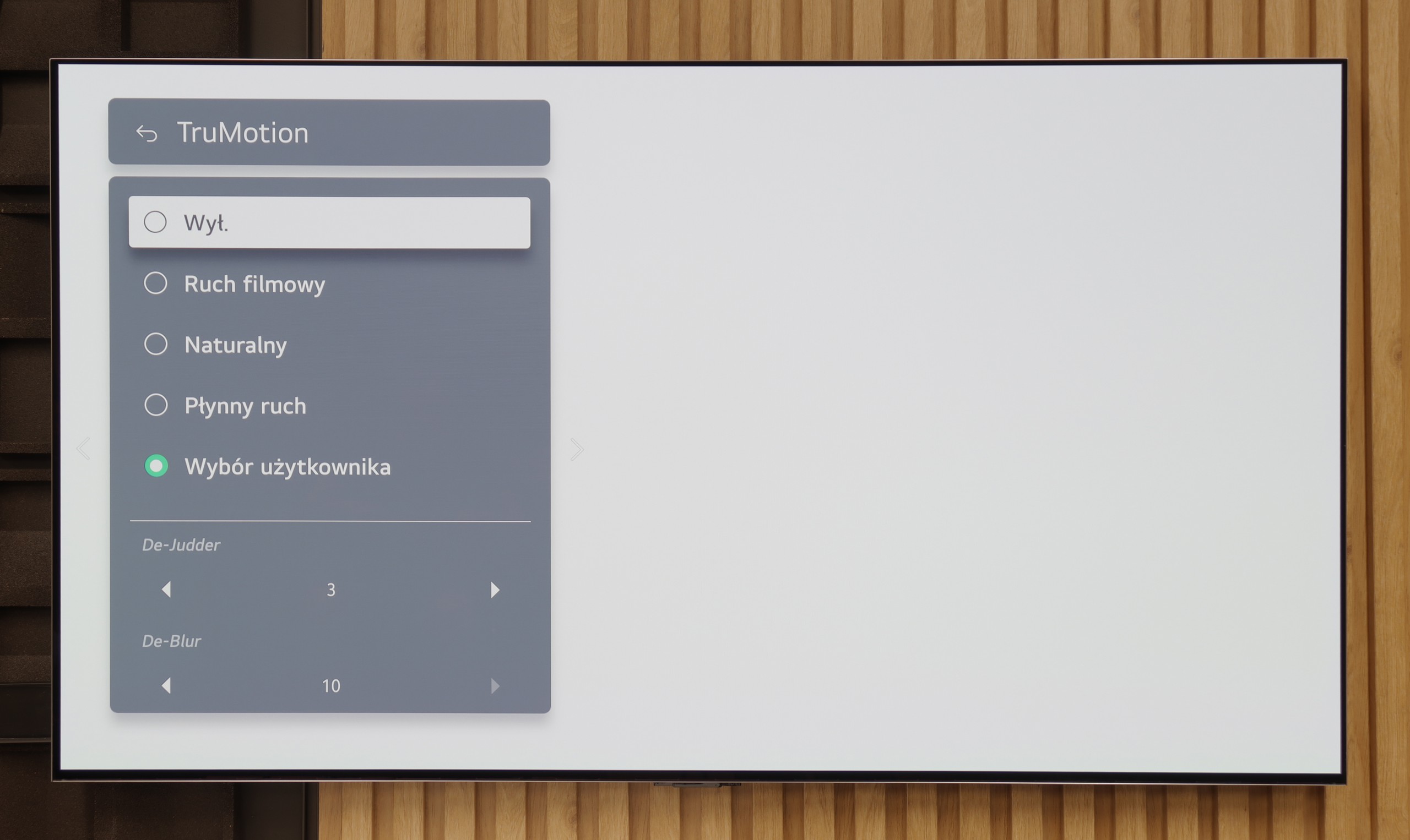

Blur (native resolution, maximum refresh rate):






Blur (BFI function enabled):
Image flickers in this mode



Image flickers in this mode
Smużenie (4K 165Hz):



Smużenie ():
The motion fluidity on the LG G5 is simply phenomenal. The TV is equipped with a 165 Hz refresh rate panel, and this combined with the instantaneous response time of the OLED matrix delivers incredible results. The picture doesn’t stutter or smear like on classic LCD TVs. Like most LG models, the G5 features a motion smoother, which can be useful when watching movies – of course, we're talking about the TruMotion mode. With the “De-Blur” and “De-Judder” sliders, we can adjust the smoothness of older material according to our preferences, whether we want to preserve the characteristic film stutter or move towards a more fluid, television-like effect.
S90F really handles motion great – after all, it's an OLED with a 144 Hz panel, so sports and games look simply amazing on it. The picture is smooth, clear, and there's no room for ghosting or blurring that sometimes plagues cheaper LCDs.
The TV is also equipped with motion smoothing settings that allow you to tailor everything to your liking. We have motion blur reduction and judder reduction – you can set it up to make the picture super smooth (even to that soap opera effect), or more cinematic, with the classic "choppiness" of 24 frames. The choice is yours; Samsung doesn't impose anything.
Console compatibility and gaming features
10/10
9.5/10
- ALLM
- VRR
- VRR range40 - 165Hz48 - 144Hz
- Dolby Vision Game Mode
- Correct implementation of HGIG
- 1080p@120Hz
- 1440p@120Hz
- 4K@120Hz
- Game bar
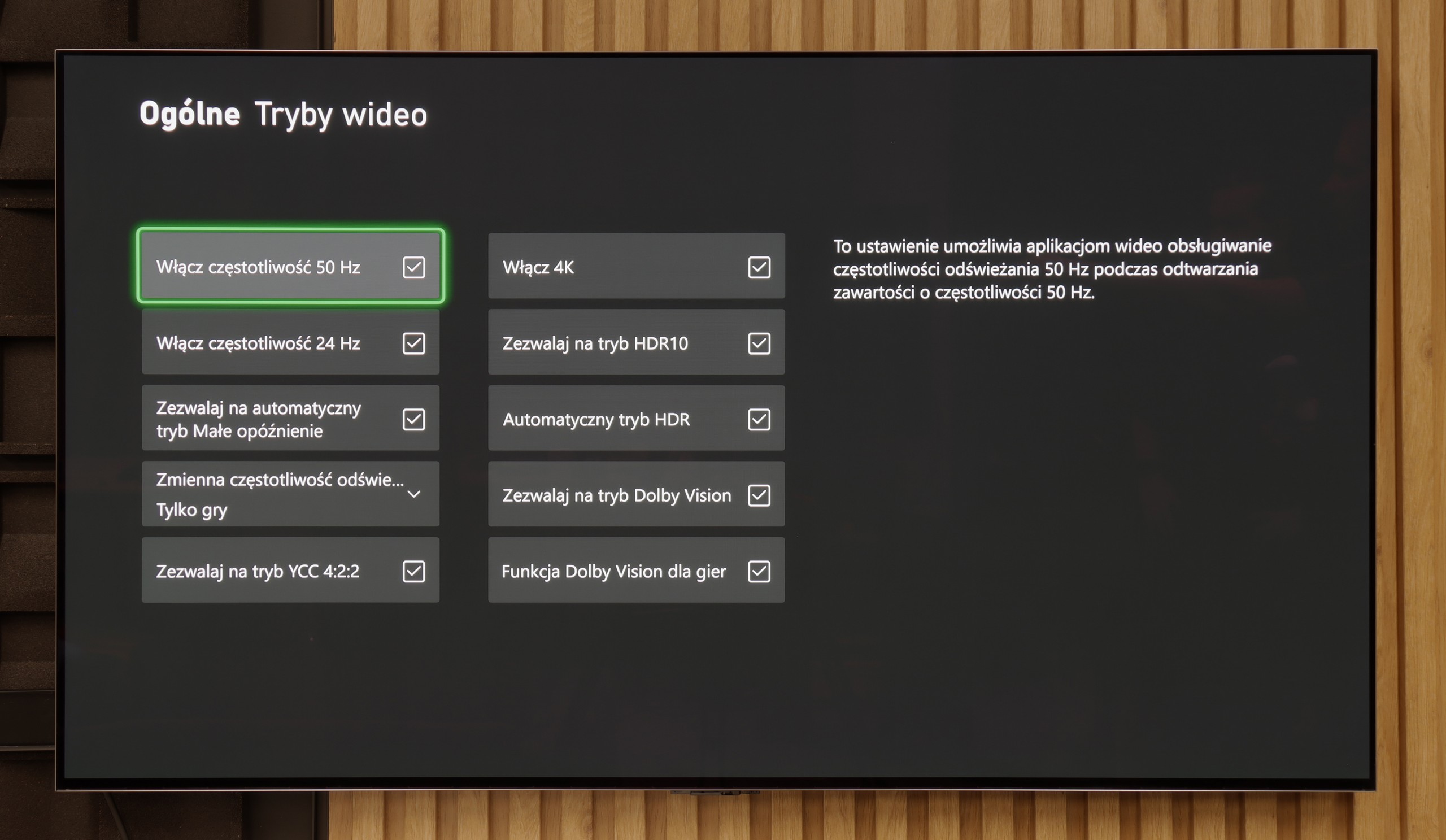

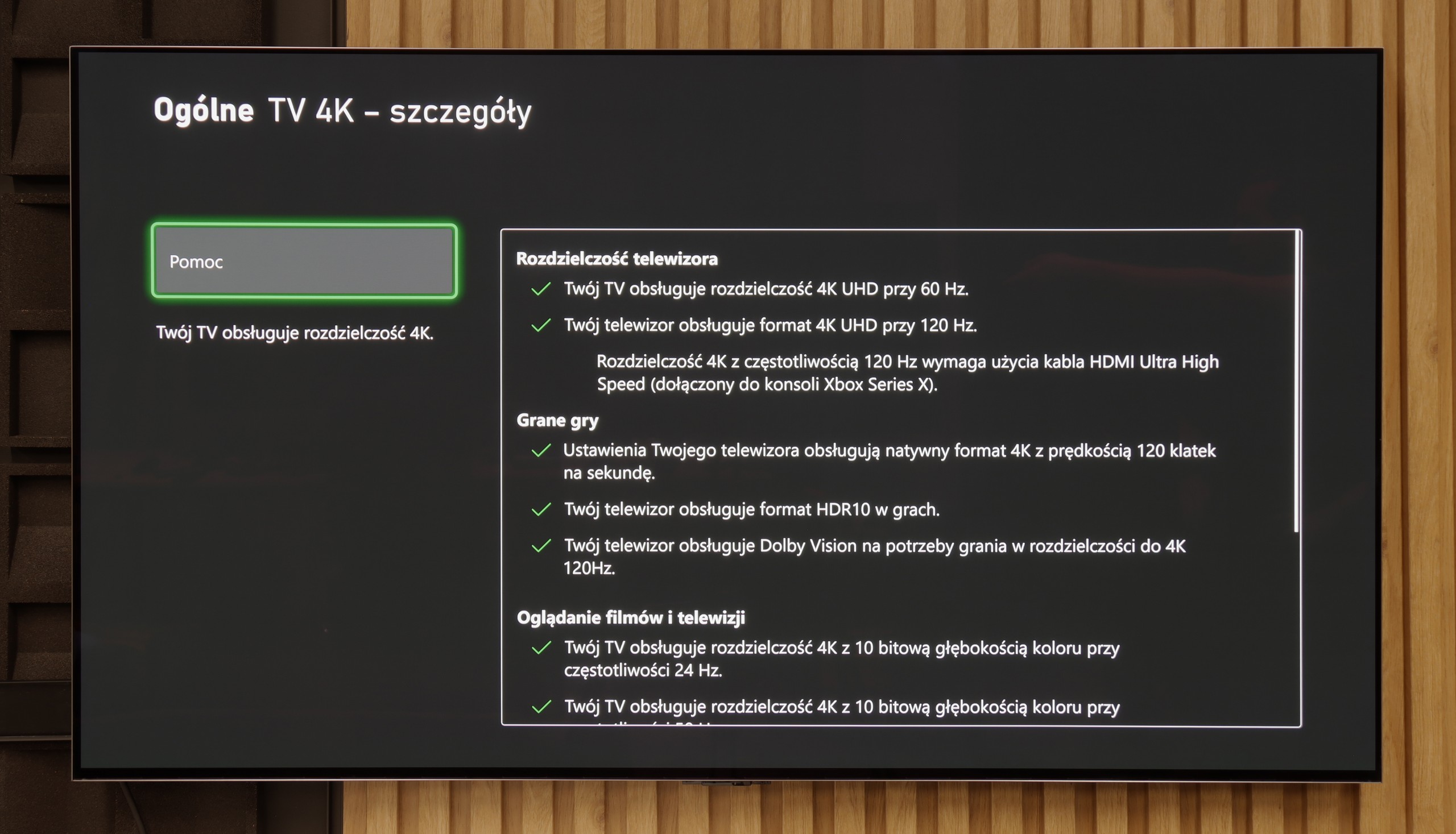

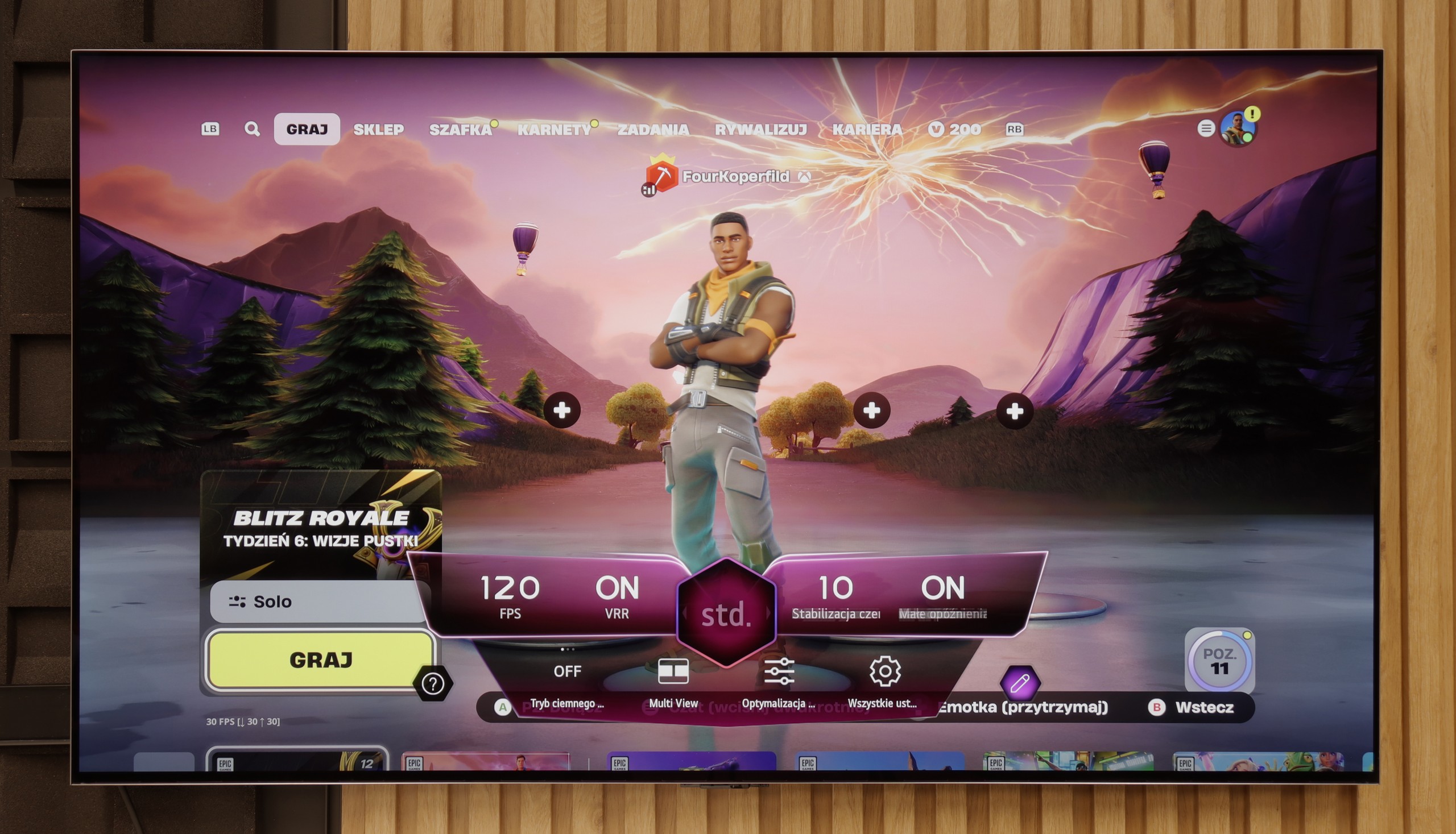

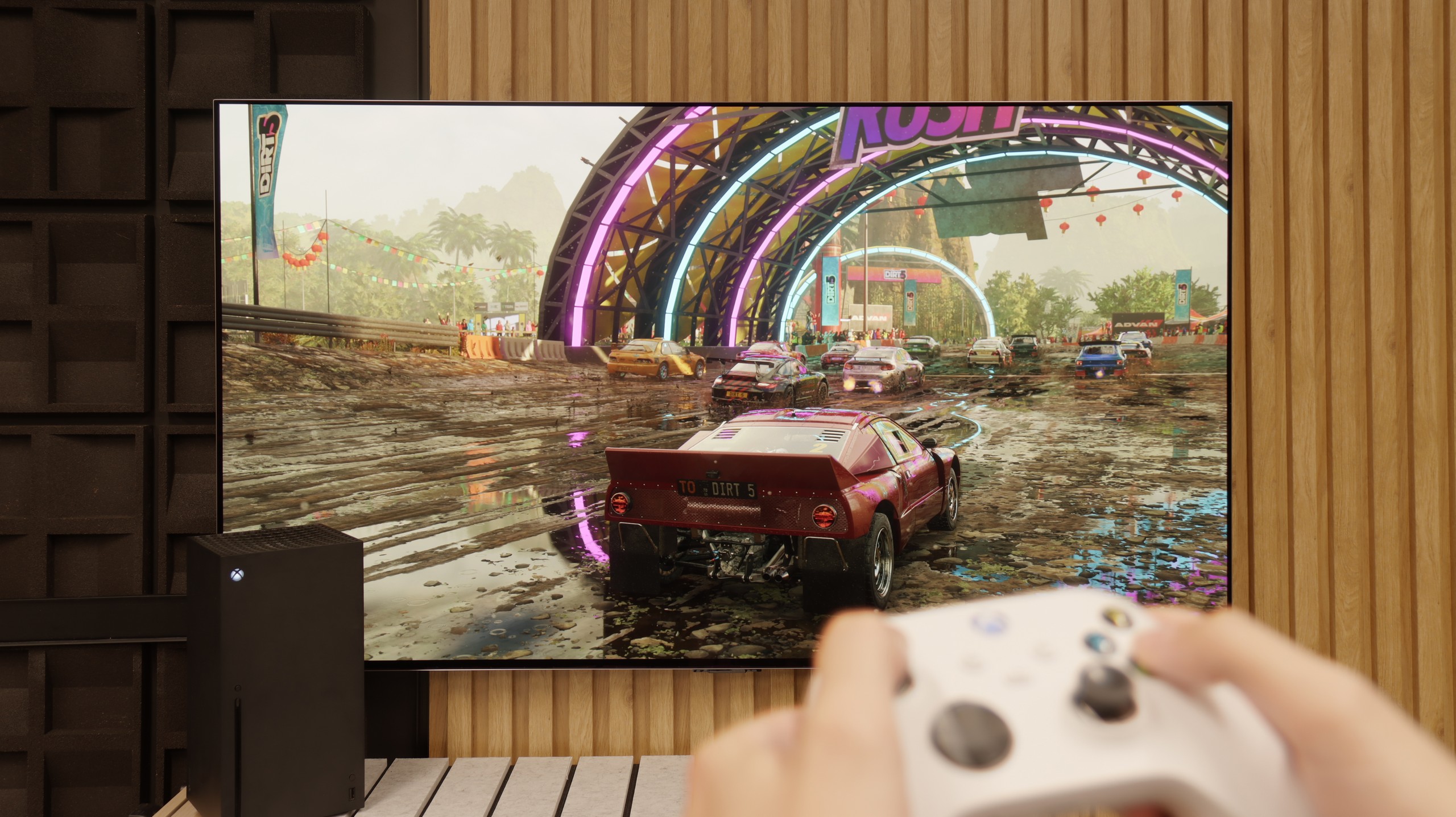

Features for gamers? Perfect. That should be enough for you to know what level we are dealing with here. G5 is a television designed with gamers in mind, so we find literally everything one can expect from a gaming screen. There is Game Bar, support for high resolutions with high refresh rates – that is, 4K at 120 Hz, and even more, because the panel has a refresh rate of 165 Hz (which PC gamers will benefit from). The television supports variable refresh rates (VRR), automatic low latency mode (ALLM), and correctly supports HDR in games thanks to HGiG. All of this adds up to one of the best sets of gaming features available on the market. Well done, LG.
When it comes to gaming features – we have absolutely no complaints about the S90F. Aside from the lack of Dolby Vision, which is already the norm for Samsung. The TV operates at 144 Hz, has four HDMI 2.1 ports, so you can easily connect more than one console or PC. It also includes Game Bar – a practical tool that allows you to quickly preview picture settings, VRR status, ALLM mode, and other useful options. Game Motion Plus is also noteworthy – Samsung’s proprietary motion smoother, which uniquely works well in games. The image feels smoother without any artificial effects or slowdowns.
It’s also worth mentioning the HGiG feature, which – surprisingly – works correctly. We mention this because Samsung clearly broke something in one of its recent updates, and in some models, the option responsible for HGiG simply... disappears from the menu. Setting it becomes virtually impossible. Fortunately, our S90F unit did not have this issue, but the situation is dynamic, so it’s worth keeping this in mind and regularly checking for new software versions and information from the manufacturer.
Input lag
9.9/10
10/10
SDR
HDR
Dolby Vision
The input lag on the LG G5 is incredibly low. The response time to our actions – whether we're playing with a controller, keyboard, or mouse – is almost perfect. The controls are instant, and the game reacts exactly when we expect it to. The Dolby Vision Gaming mode does introduce slightly higher delays, but even then it's hard to complain about anything – in the worst case, the values hover around 20 ms, which for most players will be practically unnoticeable.
The input lag on the S90F is at a truly monitor-level. In the best conditions, a result of 5 ms was achieved, which is absolutely outstanding – even a reference for the most demanding gamers. Whether you are playing fast-paced shooters, fighting games, or simply need instantaneous response – the S90F does not disappoint in this aspect at all.
Compatibility with PC
8.8/10
8.6/10
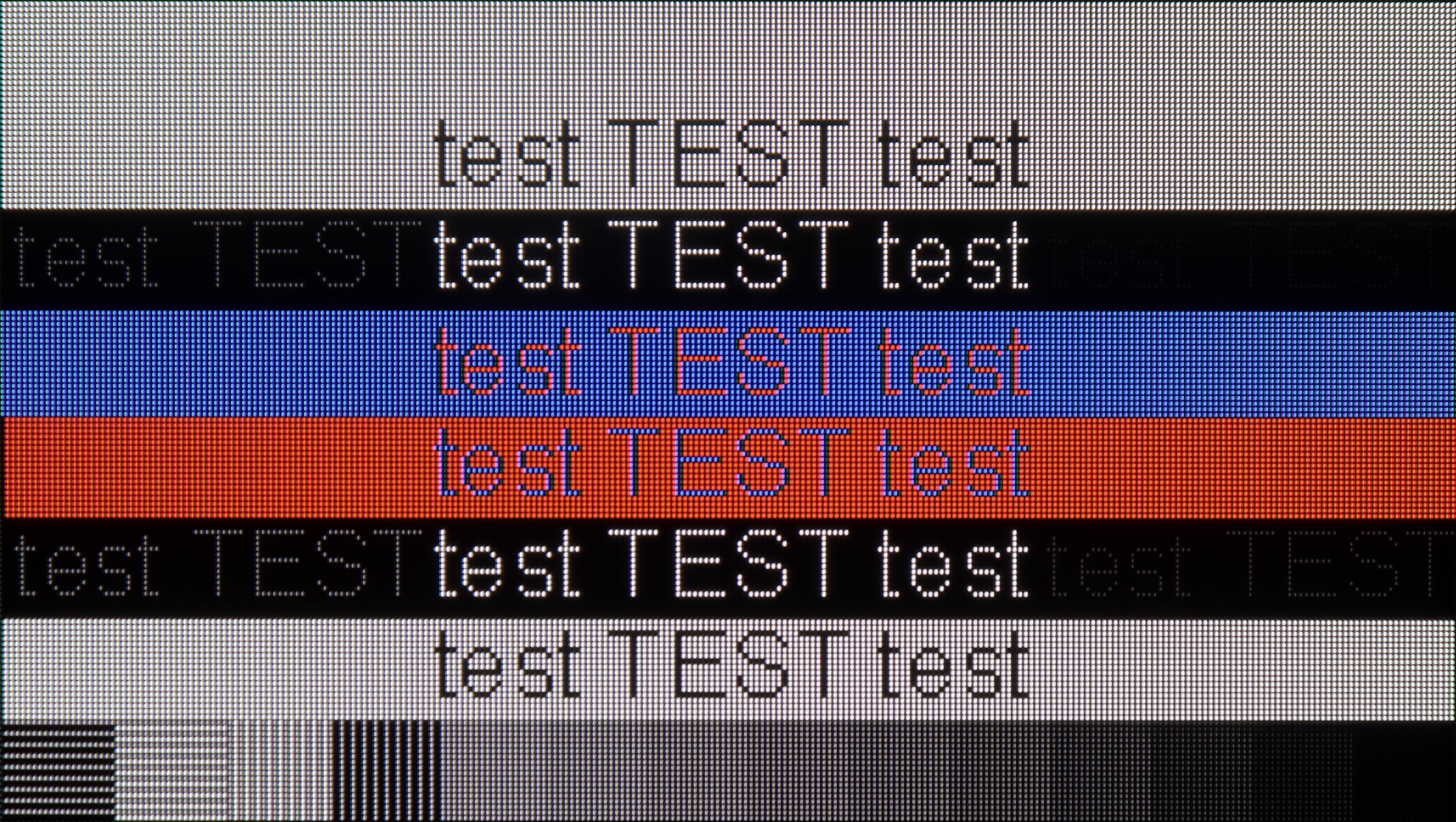

Collaboration with a PC? Almost ideal. The television, as we mentioned earlier, has great features for gamers – including those using a PC. On board, we find full G-Sync certification, a 165 Hz panel, and a super-fast input lag of around 5 ms. Thanks to the correct implementation of chroma 4:4:4, fonts are very readable – both the smallest and the largest. Although due to the WRGB subpixel layout, there may be slight shadows around the characters, for most users this effect will be virtually unnoticeable. The G5 performs excellently as a screen for work, entertainment, and gaming – also from a computer.
The S90F is a great tool for both PC gaming and everyday work. Gamers can sleep easy – the television easily supports image synchronization with NVIDIA graphics cards thanks to G-Sync, and the 144 Hz refresh rate combined with very low input lag just confirms this. The S90F also works well as a monitor for text work. Of course, the readability of fonts may be slightly affected by the characteristic pixel structure in the RWGB layout, but this is a topic well known mainly to those who work with large amounts of text, code, or spreadsheets in Excel. For most users, this will be completely acceptable.
Viewing angles
7.5/10
7.4/10
The viewing angles on the LG G5 are very good, mainly due to the use of the WOLED matrix. It's hard to find something to complain about here – the image does not significantly lose brightness or quality even when we look at the screen from the side. However, it must be fairly noted that there is some regression compared to the G4 model. The predecessor used an MLA matrix with micro-lenses, which offered slightly better light distribution. Also, compared to QD-OLED matrices, the angles are worse. Nevertheless, the overall viewing experience at an angle remains very good and should not be an issue in everyday use.
The viewing angles on the S90F are very good, although it's fair to admit that they slightly lag behind the 65" version with the QD-OLED panel. Nevertheless, the picture quality at a wide angle is very good – colors remain vivid, and brightness does not drop drastically when viewed from the side. There is no need to shift the TV toward you to see a clear image. For most users, this level is completely sufficient.
TV efficiency during daytime
8/10
6.1/10
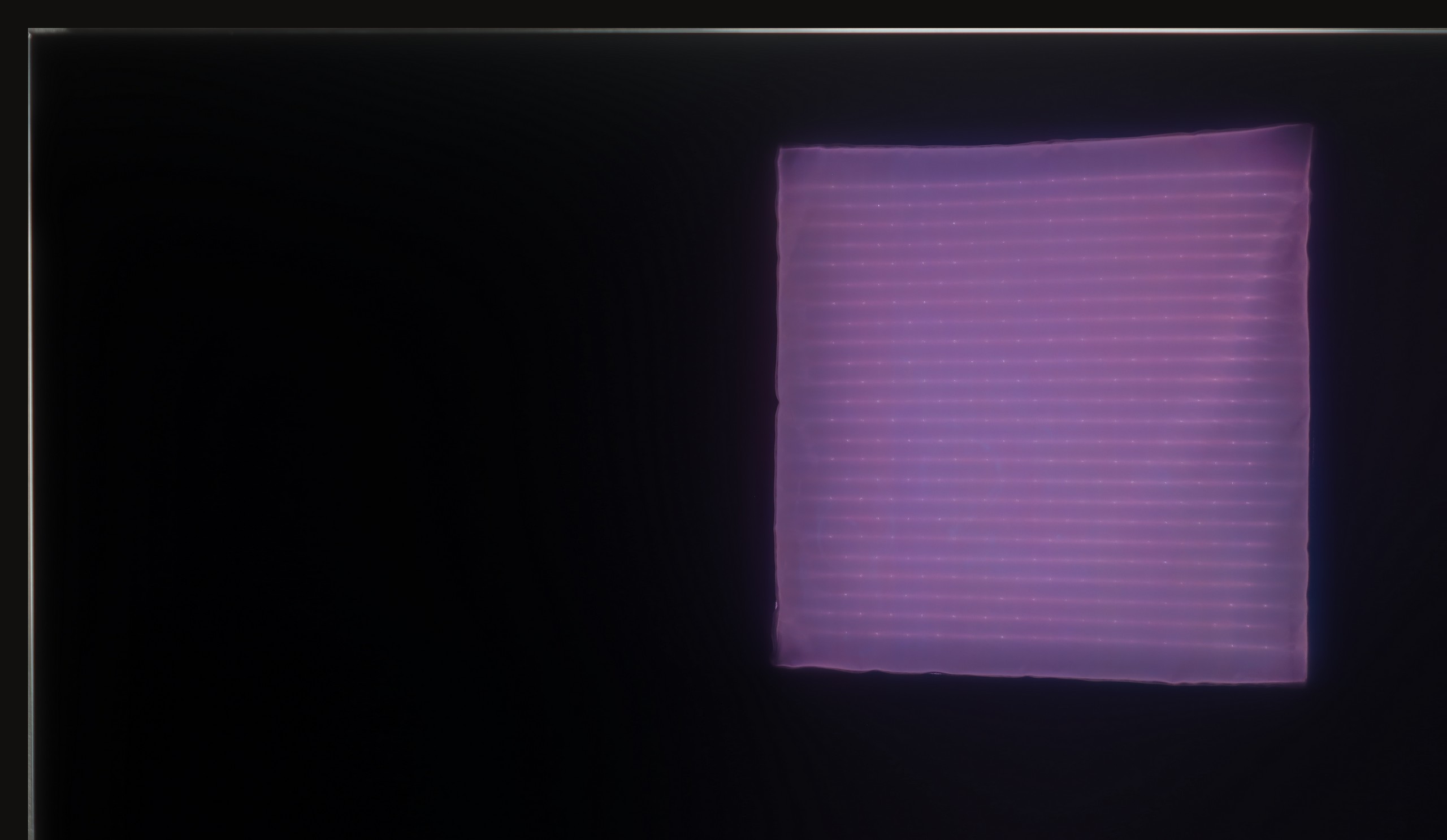



Matrix brightness
Average luminance SDR
SAMSUNG OLED S90F (WOLED): 405 cd/m2
LG OLED G5: 810 cd/m2
The LG G5, thanks to its very high brightness, performs excellently in bright rooms. Even with SDR content, the average brightness value is around 800 nits, which is significantly more than in standard televisions. It can easily handle a bright living room. Although the panel averages out reflections, it still maintains significantly better black levels and colors during the day than QD-OLED panels or matte-coated screens. The G5 will perform well in very sunny rooms—unless you really can't stand reflections on the screen. In that case, you will need to use blackout shades or consider buying a television with a matte screen.
S90F is really bright for an OLED TV. Of course, it can't be compared to Mini-LED TVs or the brightest high-end OLEDs, but under normal lighting conditions, it's easy to watch something during the day. The brightness is high enough that you don't need to close the curtains every time you watch a movie or a series. However, it's important to remember that the anti-reflective coating on WOLED panels is not the best. Reflections can be visible, especially with bright light coming in from the window. In such cases, it's best to reach for curtains.
Details about the matrix
Subpixel Structure:
Panel uniformity and thermal imaging:


TV features
8.5/10
7.2/10
- HDMI inputs0 x HDMI 2.0, 4 x HDMI 2.1 48Gbps0 x HDMI 2.0, 4 x HDMI 2.1 48Gbps
- Other inputsIR (remote)Toslink (Optical audio), IR (remote)
- OutputsToslink (Optical audio), eARC (HDMI), ARC (HDMI)Toslink (Optical audio), eARC (HDMI), ARC (HDMI)
- Network InterfacesWi-Fi 2.4GHz, Wi-Fi 5GHz, Ethernet (LAN) 100MbpsWi-Fi 2.4GHz, Wi-Fi 5GHz, Ethernet (LAN) 100Mbps
- TV receptionDVB-T, DVB-T2, DVB-S, DVB-S2, DVB-CDVB-T, DVB-T2, DVB-S, DVB-S2, DVB-C
Classic features:
- Recording to USB (terrestrial TV)
- Recording programming
- Picture in Picture (PiP)
- RF remote control (no need to aim at the screen)
- Backlit remote control
- Teletext
- Audio only mode
- Possibility to connect Bluetooth headphones to the TV
- Possibility to simultaneously use Bluetooth headphones and the TV speaker
Smart features:
- AirPlay
- Screen mirroring (Windows Miracast)
- Wyszukiwanie głosowe
- Voice search in native language
- Ability to connect a keyboard and mouse
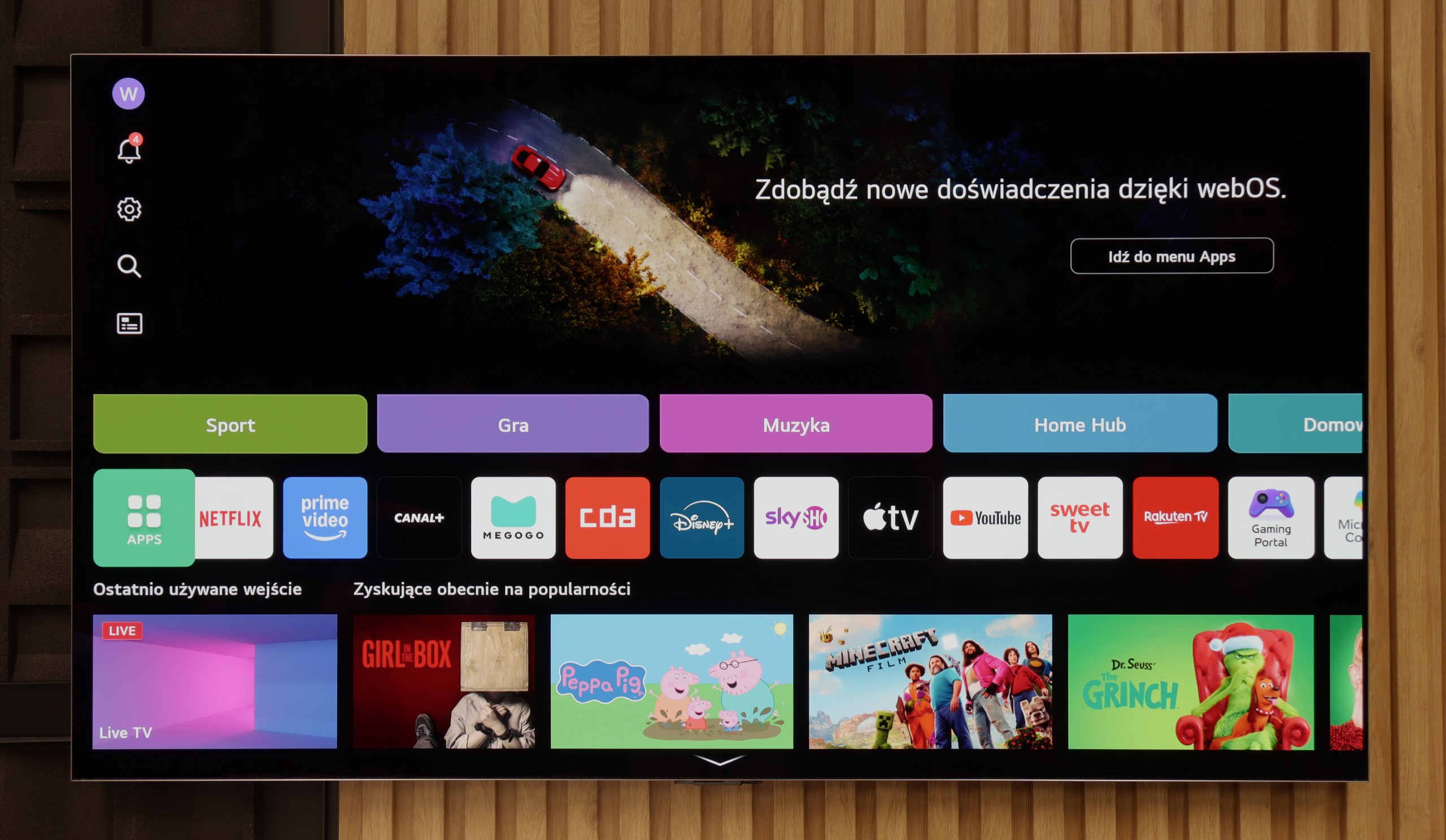
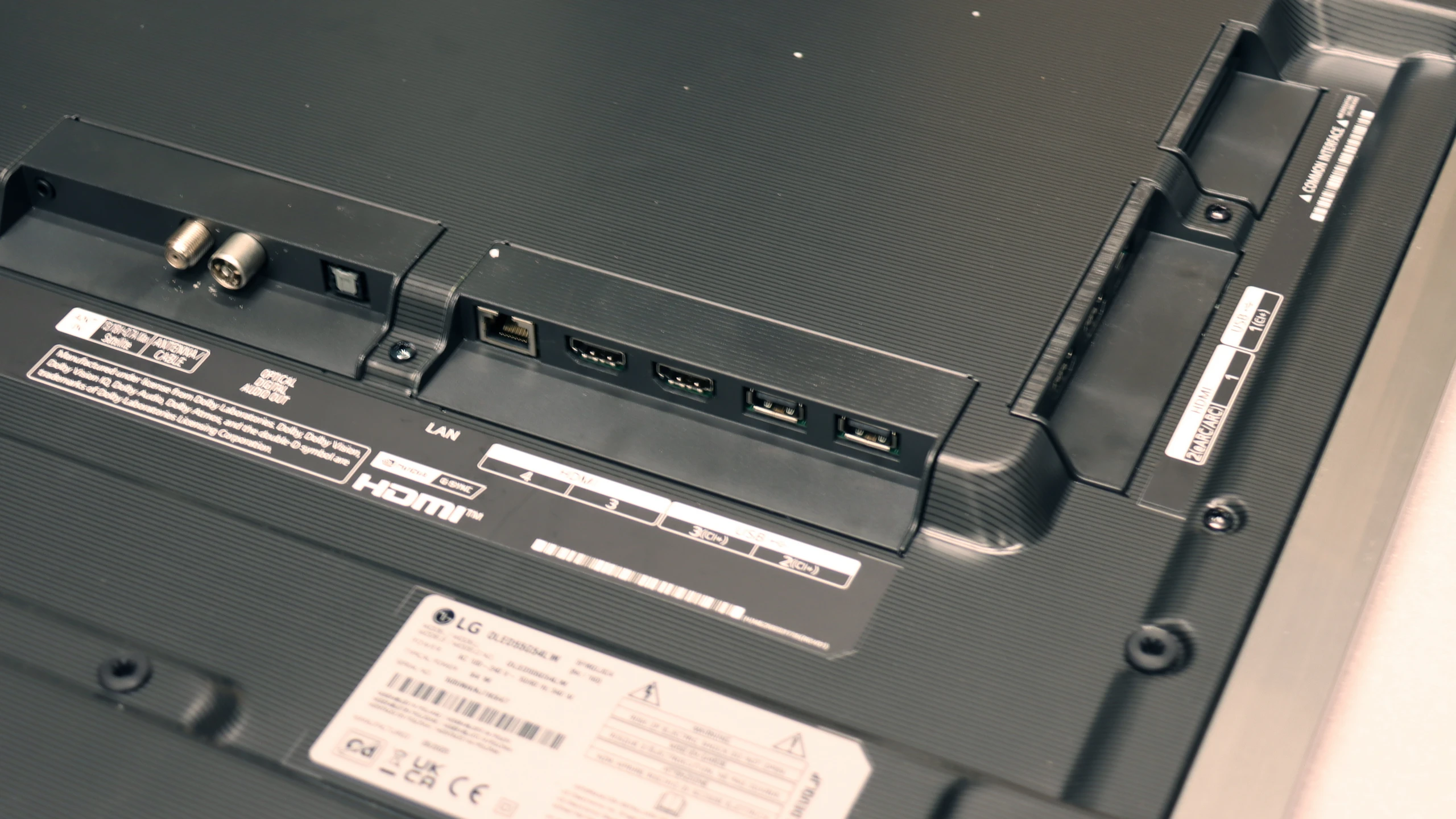
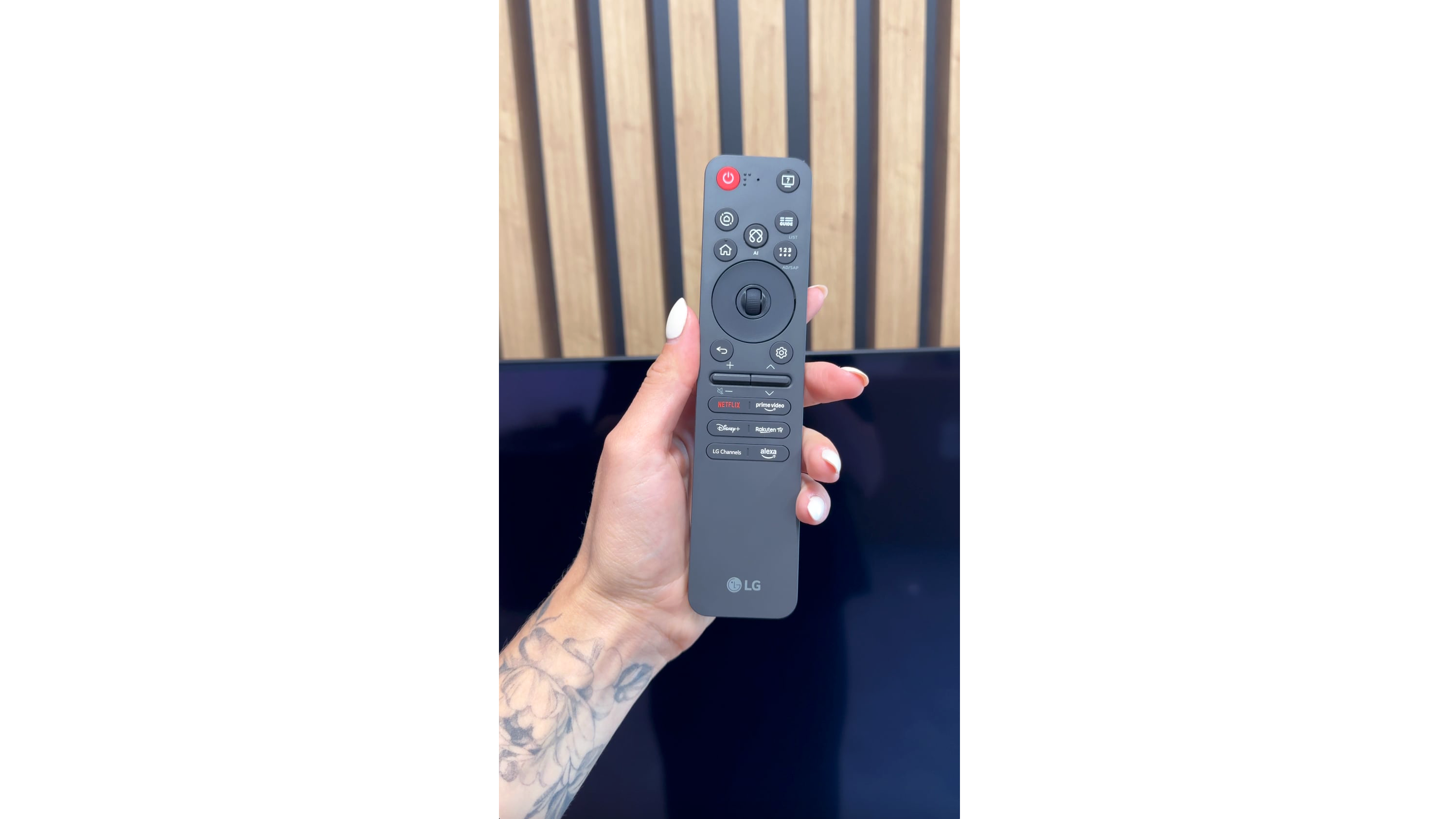
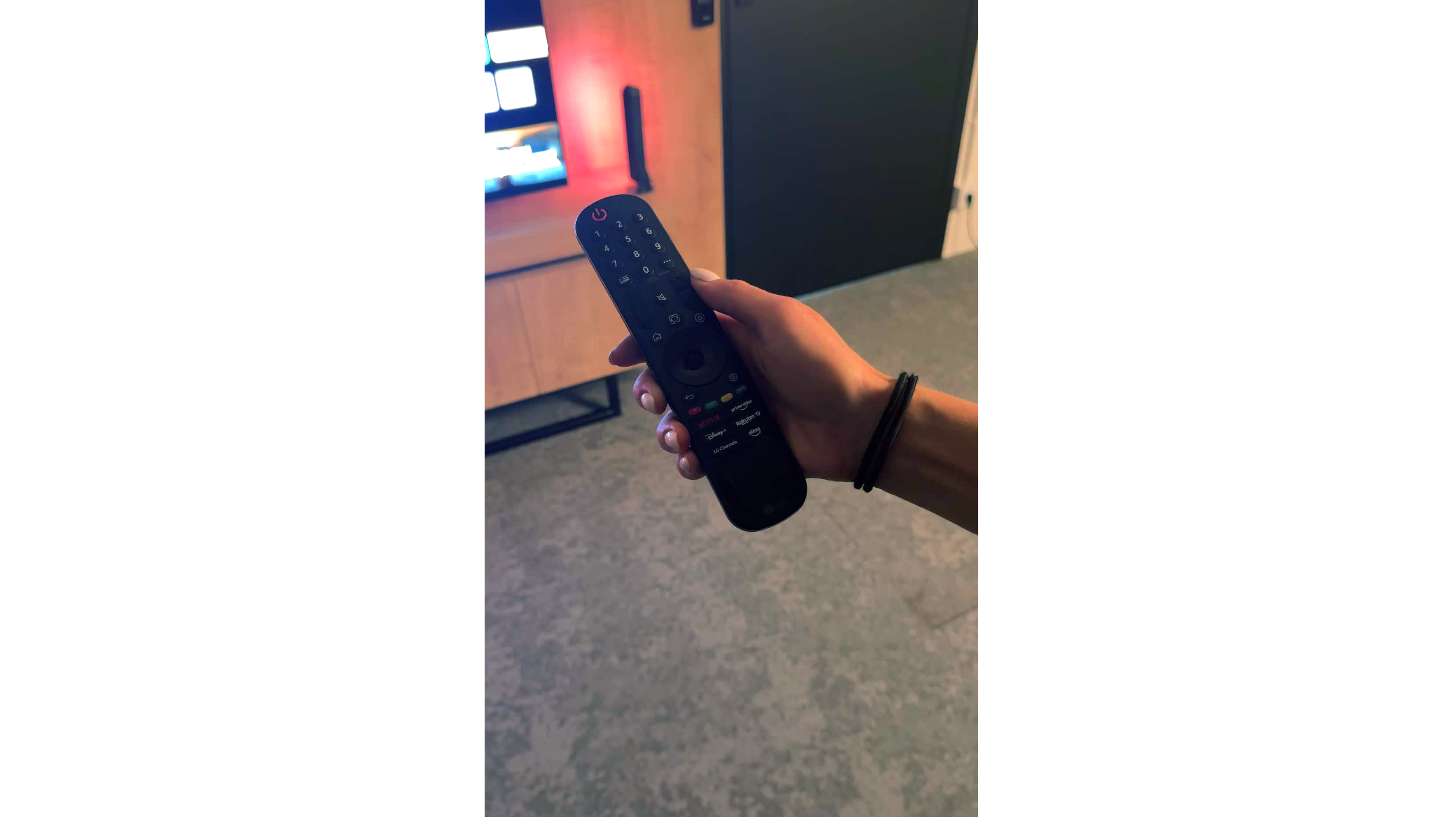




Classic Features
LG G5 has a lot to offer when it comes to classic TV features. Aside from the lack of the ability to watch two sources (PIP), the television performs well for everyday use. There are no issues with connecting external Bluetooth devices, such as headphones, and the EPG interface is very clear and understandable – even for those who are not particularly tech-savvy.
Smart TV Features
The Smart TV in the G5 operates on the WebOS system – it is the heart and brain of the entire television. Thanks to the Magic remote, using the G5 is truly enjoyable. We control the cursor on the screen with wrist movements, which is somewhat reminiscent of using a mouse in the air. The system itself is very comprehensive and offers everything one could expect: AirPlay, screen mirroring, voice search, and voice commands – all of these work smoothly and without delays. Without a doubt, this is one of the best operating systems in televisions on the market.
Note:
During our testing, we had practically nothing to complain about – except for one exception: the confusion surrounding the remote. Depending on the market and the specific version of the model, you may come across the new, minimalist Magic remote (without a numeric keypad), or the older version with a full set of buttons. We tested the G54LW model, which had the new Magic remote, but it is hard to say how the situation looks in other variants. Perhaps it is a similar situation to the LG C5 series, where the addition of the remote also depends on the specific market.
The Samsung S90F is equipped with many classic TV features such as EPG, CI module, and headphone support, but there's also something more here. Thanks to the presence of several tuners, the television offers a picture-in-picture (PiP) function – very useful, for example, when we're watching one match but want to glance at the score of another one happening simultaneously. It's a shame that Samsung has completely abandoned USB recording for some time now, but it somewhat compensates for this with good integration with decoders and other devices. The remote – although small and lacking a numeric keypad – allows control of many devices connected to the television. We can easily operate a decoder, amplifier, console, or other equipment with it, and this can be done without the need to reach for multiple remotes.
As for the Smart TV system – Tizen on the S90F works very smoothly, which is not always the case with cheaper models featuring this system. The system itself is extensive and offers plenty of features – we have screen mirroring, AirPlay, Bluetooth device support, and many options related to smart home control, such as managing light bulbs or other smart devices directly from the television. However, it's important to remember that Tizen is a closed system, so when it comes to apps – we are limited to what we find in the Samsung store. While this store is quite extensive, it does not match the flexibility of the Google TV platform. It's worth keeping this in mind if you have specific needs for niche applications.
Playing files from USB
9/10
8/10
Supported photo formats:
Maximum photo resolution:
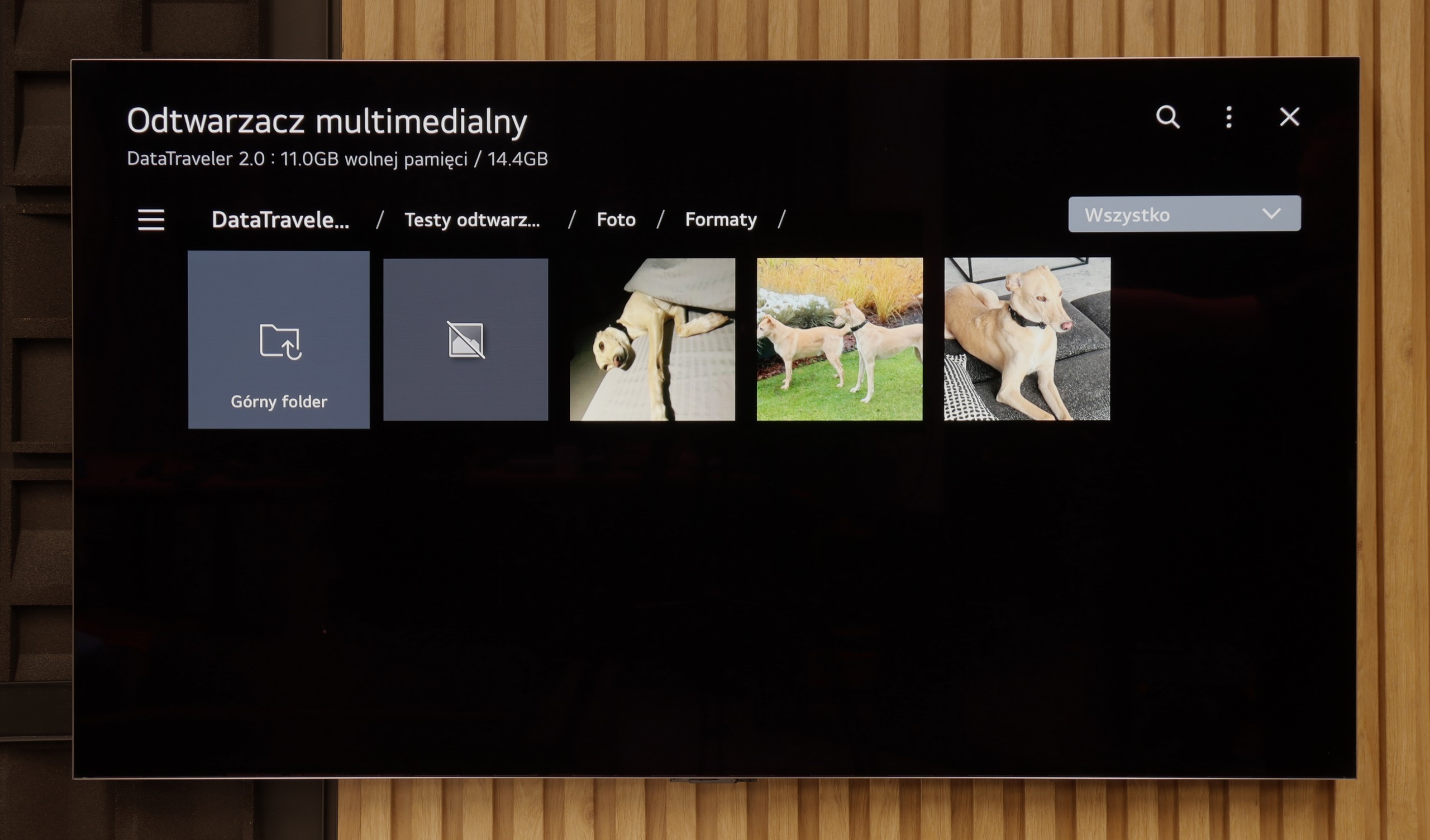

The built-in media player in the LG G5 is really very good. It supports virtually everything you would expect from a modern television – most popular formats work without issue, and the application performs quickly. Our only disappointment was the lack of support for very high bitrate HEVC files at 85 Mbit/s – similar to the C5 and B5 models. Interestingly, the same file worked flawlessly on last year's LG OLEDs, so it's hard to say what is behind this change. Nevertheless, in everyday use, the G5 will handle the vast majority of content, and there will be no need to connect any external devices for media playback.
The built-in media player in the S90F is fine and supports a good number of popular formats. Unfortunately, during testing – once again – we encountered issues despite the manufacturer's claims. The TV did not play some formats that are supposedly supported, such as HEIC photo format (Apple's version) or SRT and SUB text subtitles. In the daily use of most people, such a player is probably sufficient to run a movie from a USB drive, but it's worth keeping in mind that surprises can happen. Perhaps the situation will improve in future updates, but at the time of writing this review – it works as it works.
Apps
9.1/10
8.7/10














































Sound
8.7/10
7.4/10
- Maximum volume--
- Dolby Digital Plus 7.1
- Dolby True HD 7.1
- Dolby Atmos in Dolby Digital Plus (JOC)
- Dolby Atmos in Dolby True HD
- DTS:X in DTS-HD MA
- DTS-HD Master Audio
The sound on the LG G5, given its slim body, is truly phenomenal. When listening to music, a light, pleasant bass can be felt, and in movies, the dialogues are clear and easily heard – they do not get lost even in dynamic scenes. Unfortunately, a certain disappointment is the lack of support for the DTS format, which LG used in its older models. It's a shame, because many people with home theaters may see this as a step backward.
The S90F sounds really pleasant, with noticeable bass and quite good dynamics. A definite plus is the support for Dolby Atmos, which allows the television to sound a bit more "spatially" – of course, as much as the built-in 2.1 system allows 😉. Unfortunately, as with Samsung, there is no support for the DTS:X format. So if you want to take advantage of its capabilities, you need to connect the audio equipment directly to the receiver, not to the television itself – otherwise, it simply won’t work.


